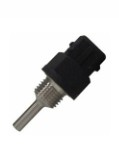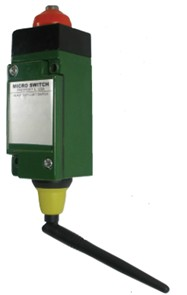Smart and safe crane
Sewer Jetting Pumps Sewer Jetting Pumps ZHEJIANG BOTUOLINI MECHANICAL CO.,LTD , http://www.botuopump.com
The development of safe, smart and easy-to-use cranes can help reduce crane accidents, casualties, downtime, and damage to the crane itself and surrounding project areas. If the crane tipped over the construction site, the hazard to the site and the resulting disruption of operations could result in millions of dollars in damage. Therefore, it is necessary to use more subsystems and electronic devices to continuously monitor the phases of crane operations, improving safety and ease of operation. 
An 'intelligent' network of sensors, switches and controllers can automatically issue alarms and solve problems when dangers are approaching, rather than relying solely on the crane driver's intuition.
Talking about emissions, the network of sensors and precision electronics can constantly monitor the operation of crane engines and hydraulic systems to ensure that all systems operate at maximum efficiency. When crane operations are optimized overall and operations are more efficient, the time and total investment required to complete a task or project will be reduced. If the crane can complete a complex task within 5 hours instead of 7 hours, the fuel consumption and harmful by-product emissions will be reduced accordingly.
Intelligent Crane Introduction 
Intelligent cranes can use a wide range of sensors and switches to provide safe, efficient, and highly accurate crane movement and load positioning (see illustration). For example, a lifting force sensor (sensor 22a) is mounted on the top of the crane arm so that the lifting weight can be measured to ensure that the lifting weight does not exceed the safe operating range of the crane. In addition, a similar load switch (sensor 22b) is mounted on the outrigger to maintain the stability of the crane on uneven ground to ensure a good balance of the crane and to prevent tipping.
The temperature sensor measures the temperature of the various oils and liquids used by the crane to prevent overheating of the machine and system malfunction (sensor 2), while the cabin also has a similar temperature sensor (sensor 1) to ensure that the driver can work at a comfortable temperature .
Most cranes use limit switches to measure and sense displacement, especially when moving parts reach their specified operating limits. Measuring limit switches (sensors 17 and 18) of crane jibs and arm extensions can reduce the possibility of the jib and/or cantilever sticking out too far and prevent the cantilever from being damaged during lifting or tilting.
The pressure sensor can be used to measure the amount of liquid in the tank to ensure that sufficient gas, fuel, and brake fluid are reserved for subsequent operations. Once the pressure drops below a certain level, the sensor alerts the driver (sensors 11a, 11b and 11c).
Wireless support and robustness The recent trend in the industry and OEM manufacturing industry is to replace standard wired switches and sensors with wireless switches and sensors. In the crane illustration, the wired limit switch for measuring boom overhang has been replaced by a wireless switch using the industry's 802.15.4 technology.
Wireless technology is well suited for industrial applications where cable can cause the cable to repeatedly extend and circulate, or contact with a large number of hazardous materials and extreme environmental conditions. With wireless technology, wear can be eliminated and subsequent downtime and costs avoided.
Nowadays, in addition to the development of custom package options, sensor technology has also made significant progress. For example, sensors and switches that are resistant to vibration, shock, water, and extreme environmental conditions and hazardous chemicals have emerged on the market, and can operate normally when cranes and other construction equipment are exposed to harsh environments.
Choosing the Right Supplier Each crane has different features, so to get the best results, sensors and switch makers must have the expertise and knowledge to understand each application and provide a wide range of different technical issues. A wide range of solutions consisting of a wide range of products. What kind of capabilities do you need to solve unmet application requirements in critical applications? Flexibility, design expertise, and choice of suitable technologies can ensure optimal performance.
In addition, suppliers with global after-sales support and recognition are equally important. In addition to the ability to meet various global certification and licensing regulatory requirements, global awareness includes an understanding of the different requirements and expectations of the market. For example, in the United States, the heavy construction engineering industry expects equipment to have a working life of at least 20 years or more; in emerging markets, equipment design life is expected to be shorter than in the United States. Developing a suitable product for different markets and mastering the balance between features, functions, and values ​​are the methods we advocate.